-
About
- About Listly
- Community & Support
- Howto
- Chrome Extension
- Bookmarklet
- WordPress Plugin
- Listly Premium
- Privacy
- Terms
- DMCA Copyright
- © 2010-2025 Boomy Labs

 Carmen Smith
Carmen Smith
Listly by Carmen Smith
Refer to the Trotter (2009) article, the ISTE Standards for students, and any other resources that you wish. Then write a definition for digital literacy in your own words.

Despite the fact that digital literacy is a national goal for all 8th graders according to NCLB, there is little consensus on what it means to be digitally literate. To me, digital literacy means feeling competent making meaning of ideas online. This means that students have the process skills necessary to consume, produce, and distribute knowledge in online spaces, such as 3-D computer simulations or Facebook. As seen in the ISTE Standards for Students, it is expected that students will “understand and use technology systems, select and use applications effectively and productively, troubleshoot systems of applications, and transfer current knowledge to learning of new technologies.” Thus, at the core of the guiding technology standards is the expectation that students will feel competent choosing, utilizing, and troubleshooting with online platforms when aiming to exchange knowledge.

Digital literacy involves the ability to proficiently use a variety of technology tools for a wide range of purposes. To be digitally literate means that a person can effectively use technology to do things such as: communicate and collaborate with others, search for information, and produce new content. In my opinion, digital literacy should include being a good digital citizen. A person who is not a good digital citizen (could be something like plagiarizing others work or posting rude comments online), is not effectively using technology and should therefore should not necessarily be considered digitally literate!
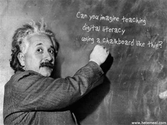
This is where you write your definition. Practice by upvoting it. Click the up arrow in the bottom left corner.
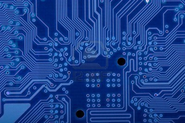
For me, digital literacy takes on a completely new meaning in terms of how you think about literacy in the traditional sense. Digital literacy is the ability to demonstrate a working knowledge of not only the device or devices one uses, but the way in which they can be utilized to create, communicate and teach. It is not enough to simply be able to use a technological tool such as a laptop or a tablet, it is critical to understand how the device works and to be able to troubleshoot problems that may arise. Digital literacy is a vast subject that encompasses not only traditional skills such as reading, communication, writing, but the way in which technology expands upon those skills and enhances them. It is also essential that these skills be taught in a way that demonstrates their practical application in today’s workforce.
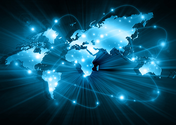
Digital literacy includes the use of technology and different applications in a variety of subjects, the ability to collaborate and interact with other people digitally, a degree of interaction with coding, an awareness of a person's identity as a digital citizen, the skills necessary to research effectively on the internet, and to be able to create original technological content.

When I consider the meaning of literacy in general, I believe that it is the ability to communicate effectively, either by writing or speaking. Therefore, the definition of digital literacy should be: proficiency at communicating using technological tools. This includes the acquisition of basic technological skills, like the operation of simple computer programs and social media sites. Foci, such as digital citizenship, should not be included in the definition of digital literacy, since they involve complex thinking and awareness. While I think that digital citizenship is of the utmost importance, it should not necessarily be included in the specific definition of "digital literacy." For the purpose of data collection and assessment, digital literacy should be the very first step on the technological staircase. The technological staircase must be ascended step-by-step, beginning with digital literacy.
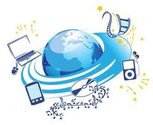
I believe that digital literacy is based among the same concepts as literacy itself. Those are the ability to not only communicate effectively and accurately but to do so in a manner that is current and respectful. Being within a society so adept in technology, digital literacy holds the same meaning: to effectively communicate using digital tools and technology. To perform digital literacy, not only do you have to be able to perform the tasks and functions of the technology itself but you have to do so in a manner that uses your working knowledge to portray your technological actions in a respectful way. Being digitally literate means being able to use the devices and technology to its fullest potential and to understand the systems behind it. Having digital literacy is having an identity as a digital citizen.
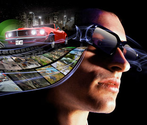
Digital literacy is the ability to be able to use different types of technology to your advantage. This involves being quiet efficient with the technology and being able to benefit from it's uses. Digital literacy is also being able to understand the concepts of these technologies and mesh them together in order to find new ways to accomplish a task. All in all it is the evaluation of your ability to use technology and in what ways.
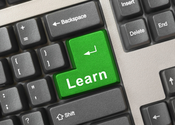
I think digital literacy means having the ability to effectively use available technological resources. Because the availability of technology varies so extensively through school systems, you cannot put a single definition on this concept, however, every using school can use the ISTE standards as guidelines for success with the resources they have available. Digital Literacy is able to be tested and measured by creating standards per school system based such availabilities.
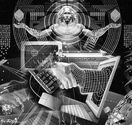
Digital literacy refers to the ability of a person to use multiple forms of technology responsibly and effectively in order to learn, spread, and collaborate with others. Someone who is digitally literate should be able to use technology to enhance learning in all areas and be able to teach others how to become digitally literate.

Digital Literacy is the ability for a person to interact, create, and involve themselves in the world of technology. With the ability to locate, organize, analyze, evaluate, synthesize, and ethically use a variety of technology sources, a person is considered digitally literate.
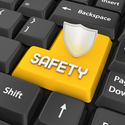
For me, digital literacy is not just the ability to use technology but how to use technology responsibly. I think the best example is internet safety. In order to be literate in technology, I think that you must understand how to use technology in a safe way, like knowing the dangers of cyberbullying and talking to people who you don't know. I also think that they need to know how to use technology so that it enhances what they are trying to do instead of being a distraction. I think that digital literacy is becoming more and more necessary as technology becomes more evolved and prominent.
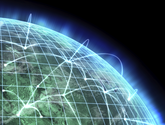
I believe that digital literacy is not only possesing the skills to use technology, but also having the knowledge to utilize the technology to interact with others. This way digital literacy is about technology usage and interactions with others.
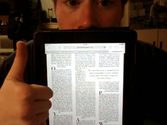
Digital literacy is a tough term to define. I think this is mainly due to the large category this term covers. The term "digital literacy" is spread too thin, so any definition would be lacking in something. With that said, i would define it as being able to use technology to improve the work, activity, etc. that you are doing. In this, is also the need to know what rights and responsibilities you have as a digital citizen, and being able to discern how technology should and shouldn't be used.
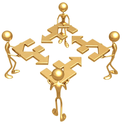
Digital Literacy: Requires online communities to interact together allowing children to experience their own learning, and be able to have each of the STEM subjects integrated together and build upon each of the others’ lessons. Incorporation of critical thinking skills will encourage students understanding to combine these subjects intellectually/technologically. The 1st and 2nd ISTE standards that call for creativity and innovation along with collaboration and communication for students among multimedia should be closely looked at. Internet safety should also be a focus for creating digitally literate students and teachers. One ISTE standard “research and information fluency” although important, may be a standard that is less critical for each student to master. It’s important for students to “apply digital tools to gather, evaluate, and use information” but if a child doesn’t master this skill/doesn’t apply digital tools to express information, they will still be productive members of society.

I think the term digital literacy holds the same meaning as literacy itself, except through technology. To me, digital literacy is being able to effective use technology in order to communicate your ideas in different ways. It also means being able to understand other the ideas and technological work of others. Additionally, I think being digitally literate is having an understanding of how to use modern technology, or having the skills to problem solve through a technology that may be new to them.
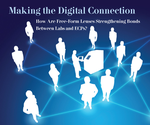
Digital literacy is at a base level having proficient understanding and knowledge of digital skills. These skills include smartphone, laptop, iPad, etc proficiency. To me it also includes an ability to be presented with technology and be able to use it effectively within a few minutes having not previously used it before. It is being skilled with technology and being comfortable with the digital field. If you are digitally literate you can effectively utilize all forms of technology to your advantage.
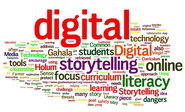
Digital Literacy: The level of individual student proficiency and comfort when using the new applications of the advancing technological world, thus allowing them to learn adequately and live constructively.
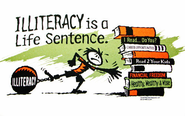
Digital literacy not only includes the ability to use and adapt to new technology, but includes the responsibility of being a good digital citizen. If we are going to encourage children to be digitally literate, we must also make sure that we hold them accountable for their actions while online. Being able to be digitally literate should be a privilege, not a right for all students, and there should be consequences if students misuse their technology.

Digital Literacy Definition: Refers to a persons participation and understanding of internet safety, STEM subjects and online communities. This includes the ability to create and navigate through the virtual world using various technologies.

I think digital literacy is the ability to take what you were doing before and and make it better through the use of various avenues of technology. The ISTE standards state that students will need to understand and use technology systems effectively and productively. I think that is one of the most crucial components because anybody can open an application or sign up for a service but being able to take that technology and truly integrate it into a way that makes the class more effective is what makes one truly technologically literate. Also, sence technology is progressing so quickly it is interesting that this defonition is going to be constantly changed and the standards will be higher and higher. I can allready see areas in technology where people younger than me seem to be more proficient, so what the future holds should be interesting.
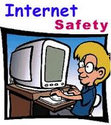
Digital literacy is a complicated term to define and is best presented as a list of things it should include (in my opinion):
-it is a 21st century skill that is crucial for students to learn in order to thrive and succeed in life
-steers students toward obtaining 21st century careers
-includes social aspects of the internet
*cyberbullying
*How to be respectful and smart on social media
-Promotes proper usage of intellectual technology
*how NOT to plagiarize
*How to cite websites
-Digital literacy includes the ability to access, merge and evaluate information, solve problems and build and share knowledge (Hairston).
-Digital literacy should teach students to focus on what they have and what they can make with it.
-How to effectively navigate through the internet
-Digital literacy is something every single student should be educated in
-How to properly research
-How to use creativity with technology to your fullest potential

I think that digital literacy stems from the same roots as regular literacy. Literacy involves two primary concepts, being able to understand text and being able to communicate through text. I think that through these two main ideas, digital literacy is not that different. The biggest changes are that digital literacy also includes multimedia aspects. So when students are learning digital literacy, they are not just learning to read and write, they are learning to comprehend all different sorts of technology based activities.

Digital Literacy to me means being able to use technology as well as be a good digital citizen. You must have some fluency with computers (how they work, basic programs, and practical applications. You must also have a basic knowledge of your rights and responsibilities as citizen in a digital world.

Digital literacy is incorporating technology into classrooms. It is the ability to expand learning through technology.
